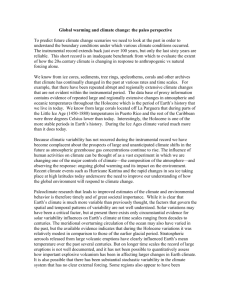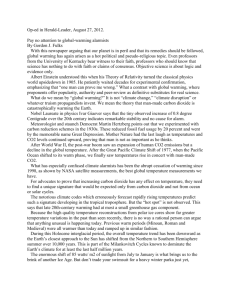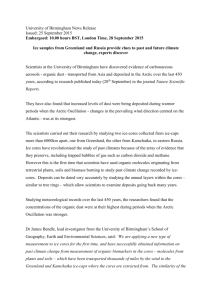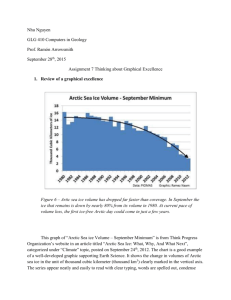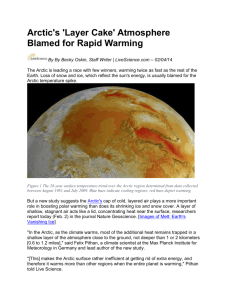this file
advertisement
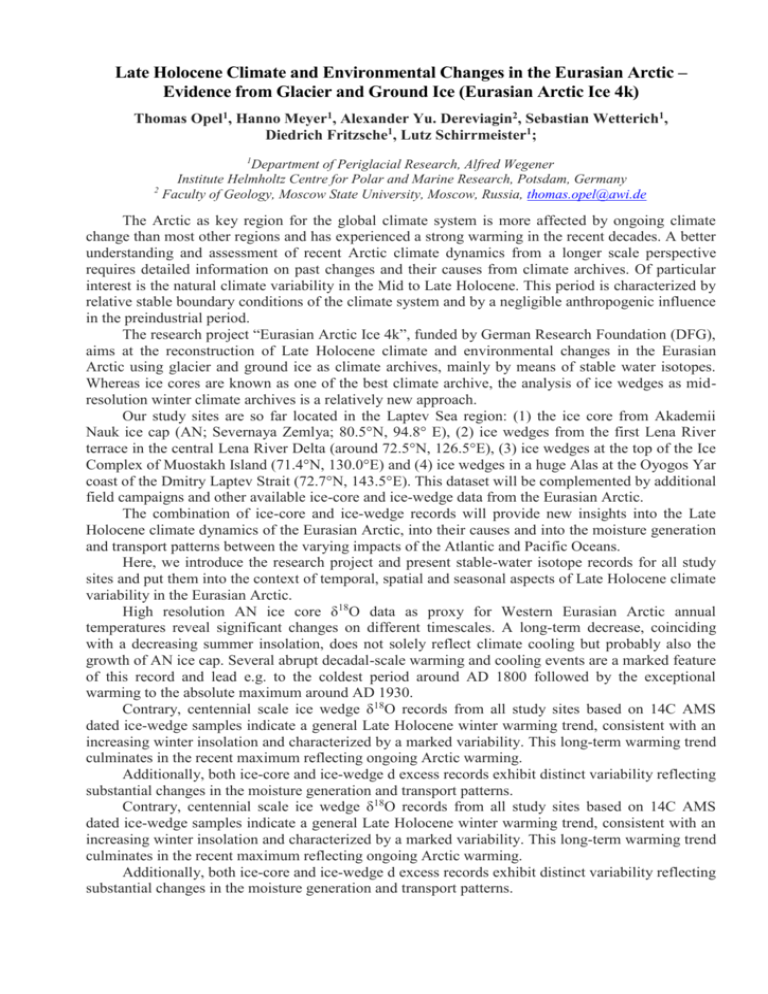
Late Holocene Climate and Environmental Changes in the Eurasian Arctic – Evidence from Glacier and Ground Ice (Eurasian Arctic Ice 4k) Thomas Opel1, Hanno Meyer1, Alexander Yu. Dereviagin2, Sebastian Wetterich1, Diedrich Fritzsche1, Lutz Schirrmeister1; 1 Department of Periglacial Research, Alfred Wegener Institute Helmholtz Centre for Polar and Marine Research, Potsdam, Germany 2 Faculty of Geology, Moscow State University, Moscow, Russia, thomas.opel@awi.de The Arctic as key region for the global climate system is more affected by ongoing climate change than most other regions and has experienced a strong warming in the recent decades. A better understanding and assessment of recent Arctic climate dynamics from a longer scale perspective requires detailed information on past changes and their causes from climate archives. Of particular interest is the natural climate variability in the Mid to Late Holocene. This period is characterized by relative stable boundary conditions of the climate system and by a negligible anthropogenic influence in the preindustrial period. The research project “Eurasian Arctic Ice 4k”, funded by German Research Foundation (DFG), aims at the reconstruction of Late Holocene climate and environmental changes in the Eurasian Arctic using glacier and ground ice as climate archives, mainly by means of stable water isotopes. Whereas ice cores are known as one of the best climate archive, the analysis of ice wedges as midresolution winter climate archives is a relatively new approach. Our study sites are so far located in the Laptev Sea region: (1) the ice core from Akademii Nauk ice cap (AN; Severnaya Zemlya; 80.5°N, 94.8° E), (2) ice wedges from the first Lena River terrace in the central Lena River Delta (around 72.5°N, 126.5°E), (3) ice wedges at the top of the Ice Complex of Muostakh Island (71.4°N, 130.0°E) and (4) ice wedges in a huge Alas at the Oyogos Yar coast of the Dmitry Laptev Strait (72.7°N, 143.5°E). This dataset will be complemented by additional field campaigns and other available ice-core and ice-wedge data from the Eurasian Arctic. The combination of ice-core and ice-wedge records will provide new insights into the Late Holocene climate dynamics of the Eurasian Arctic, into their causes and into the moisture generation and transport patterns between the varying impacts of the Atlantic and Pacific Oceans. Here, we introduce the research project and present stable-water isotope records for all study sites and put them into the context of temporal, spatial and seasonal aspects of Late Holocene climate variability in the Eurasian Arctic. High resolution AN ice core δ18O data as proxy for Western Eurasian Arctic annual temperatures reveal significant changes on different timescales. A long-term decrease, coinciding with a decreasing summer insolation, does not solely reflect climate cooling but probably also the growth of AN ice cap. Several abrupt decadal-scale warming and cooling events are a marked feature of this record and lead e.g. to the coldest period around AD 1800 followed by the exceptional warming to the absolute maximum around AD 1930. Contrary, centennial scale ice wedge δ18O records from all study sites based on 14C AMS dated ice-wedge samples indicate a general Late Holocene winter warming trend, consistent with an increasing winter insolation and characterized by a marked variability. This long-term warming trend culminates in the recent maximum reflecting ongoing Arctic warming. Additionally, both ice-core and ice-wedge d excess records exhibit distinct variability reflecting substantial changes in the moisture generation and transport patterns. Contrary, centennial scale ice wedge δ18O records from all study sites based on 14C AMS dated ice-wedge samples indicate a general Late Holocene winter warming trend, consistent with an increasing winter insolation and characterized by a marked variability. This long-term warming trend culminates in the recent maximum reflecting ongoing Arctic warming. Additionally, both ice-core and ice-wedge d excess records exhibit distinct variability reflecting substantial changes in the moisture generation and transport patterns.




